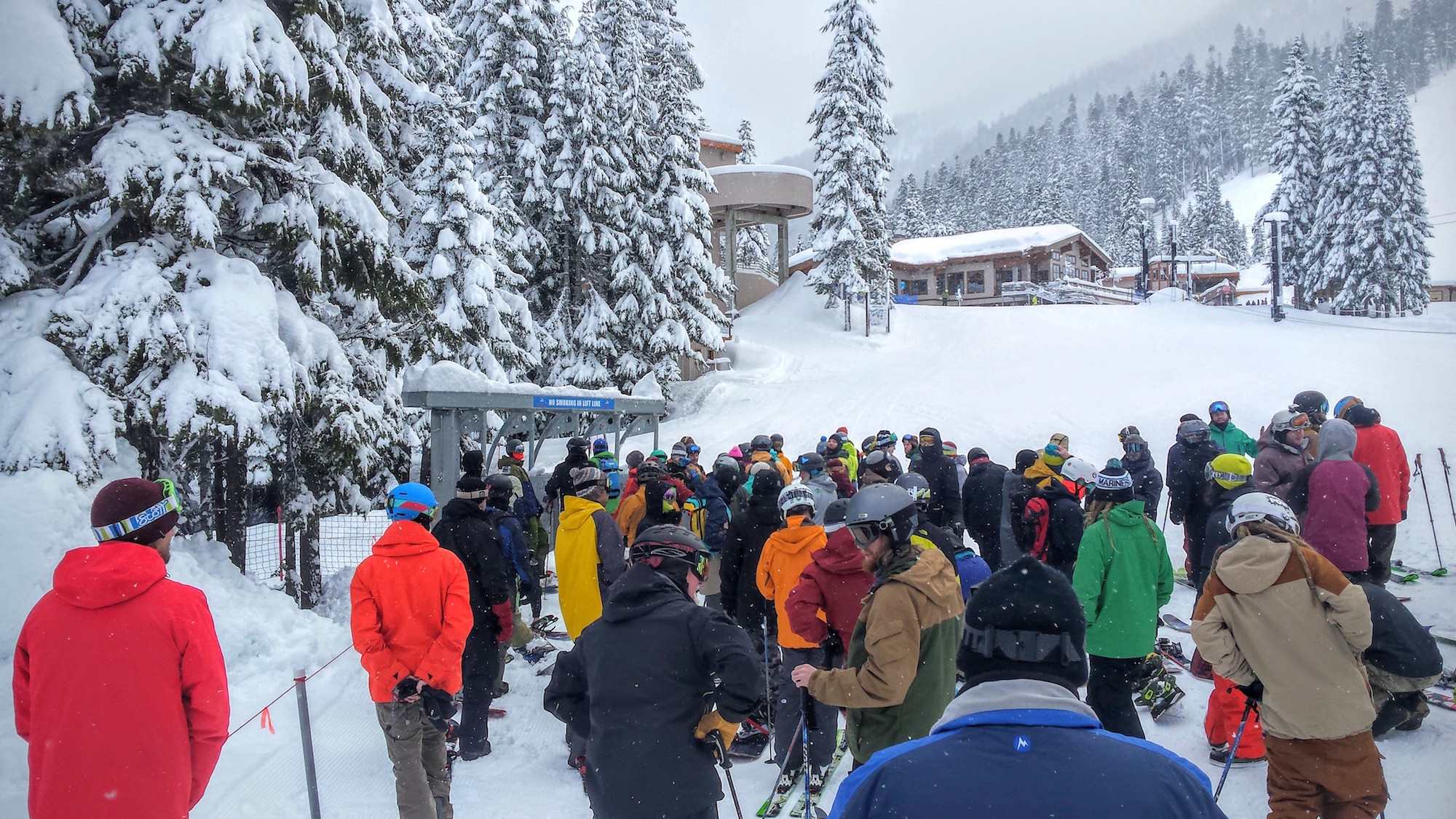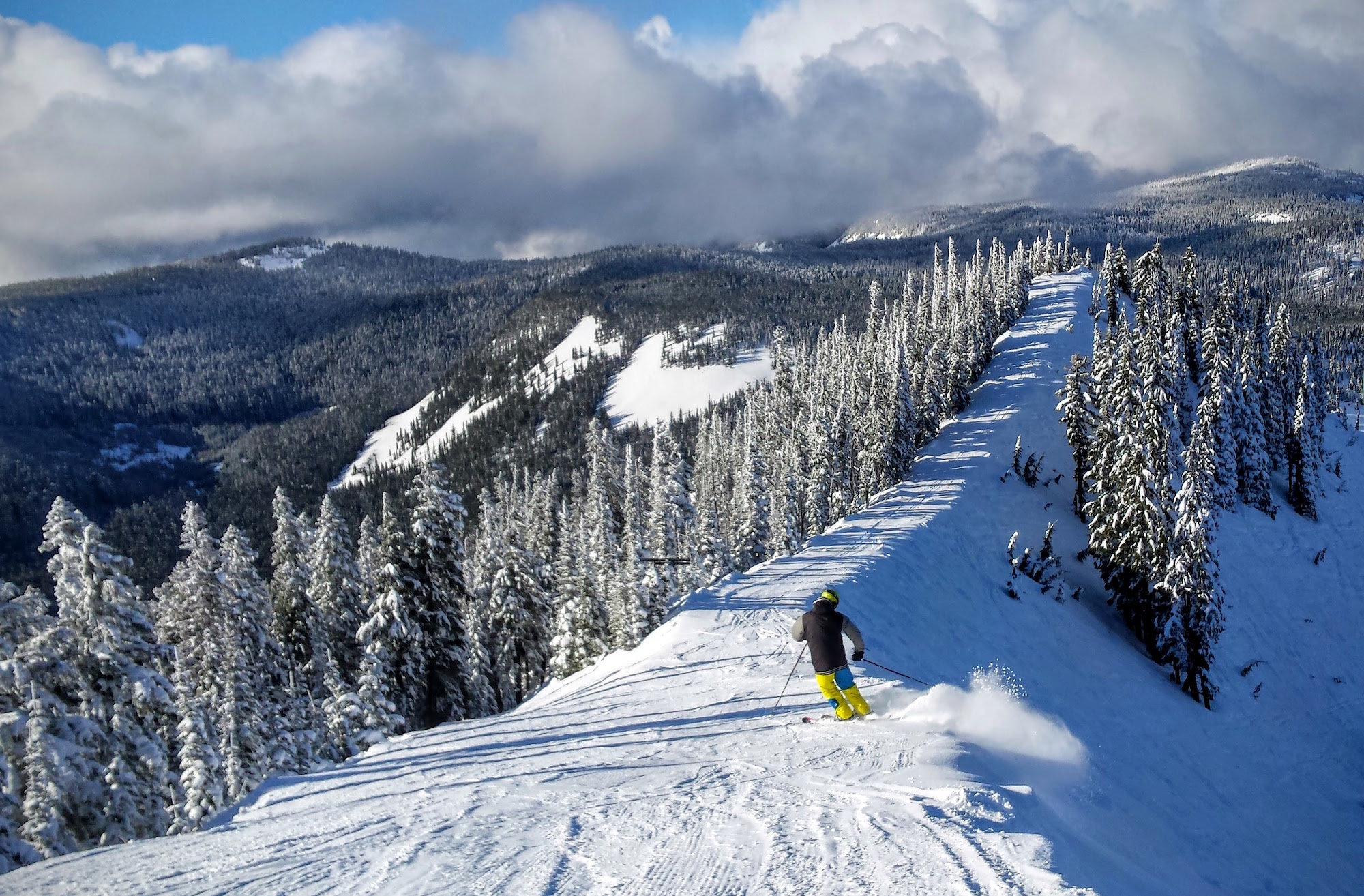We have helmets, goggles, heavy-duty gloves, high-end jacket, pants, all manner of layered, warm clothing, high-performance boots, packs and other goodies like avalanche transceivers. The cost to outfit us each of us: At least $2,000.
Expensive, right? But wait — there's also the cost of our skis and snowboards — upwards of $1,000 for each of us.
Add to that a daily ticket or a season pass, lunch in the lodge, an après drink or two, and each full gondola cabin represents $25,000 in spending just to enjoy a day on the slopes.
Which brings up the question: Is skiing just for rich people?
I’m certainly not rich. I keep my costs down by buying a season pass and bringing my own lunch. But I continue to buy expensive gear and log as many days as I can because I love the sport. In other words, it’s worth it to me to pay the price.
For many people, it’s not.
“When lift tickets became affordable only to the 1 percent, I shed the downhill gear and now spend all of my time on cross-country skis,” said Torsten Kjellstrand, a former Spokane resident who is now a professor at the University of Oregon in Eugene.
Others, like Sonja Groset of Lake Forest Park, grew up downhill skiing at resorts in the Seattle area, but now goes only a couple of times a year.
“I’m more interested in snowshoeing since — for now — it’s pretty cheap,” she said.
Visitation numbers show no decline at Northwest ski areas, perhaps indicating that yes, our population of active, well-paid workers is willing to shell out the cash for a day on the slopes.

John Gifford, president of the Pacific Northwest Ski Areas Association, said visits to resorts in the region “has been steady over the last 10 years” at about 5.4 million per season. When there are seasonal declines, it’s “not a reaction to expense as much as it is to snowpack.” In lean snow years, visitation declines, then ticks up when the snow is plentiful, as it was during the 2016-17 season.
For Amazon employees, the Summit at Snoqualmie offers substantial discounts. For the First Class beginner lesson package, employees receive nearly half off through third party websites. King 5 reported in January that the Summit was running out of space in its beginner classes as many newcomers flock to the slopes.
In many ways, Pacific Northwest skiers are lucky. It’s much more expensive to ski and snowboard in other parts of the country.
In Colorado, for instance, daily lift tickets at Vail are $189. The highest-priced daily lift ticket in Washington is $80 for adults at Crystal Mountain during peak season on weekends and holidays.
Many resorts, such has Mt. Baker Ski Area, are comparatively affordable with a midweek lift ticket for adults at $57. White Pass Ski Area charges adults just a bit more at $62 every day. And if you happen to be aged 73 (or older), your ticket is free at White Pass, one of the few areas in the country offering free tickets to active seniors.
But elsewhere in the ski industry, a move is afoot to price daily tickets much higher in an effort to encourage season pass purchases. Nowhere is this more apparent than at the resorts run by Vail.

Vail owns Whistler Blackcomb in British Columbia, a popular destination for Seattle area skiers. After Vail took over the resort in 2016, Whistler Blackcomb raised daily ticket prices to $124 USD for adults. If you’re planning to ski multiple days, it makes sense to get Vail’s Epic Pass at $859 instead, particularly since it’s good at 46 major resorts worldwide.
This move to hook destination skiers on Vail and its partner resorts through the Epic Pass has sparked a backlash in the industry.
“Skiing and snowboarding are a way of life, not a line item,” said Howard Katkov, owner and CEO of Red Mountain Resort in Rossland, British Columbia. “The families that are the core of this lifestyle are getting priced out left and right.”
Red Mountain is fighting back with a crowdfunding campaign aimed at keeping skiing affordable. Named “Fight the man. Own the mountain”, Red Mountain is selling shares of the resort to everyday investors in an effort to raise money for needed improvements.
“If you went to Whistler on a weekend, it would cost you multiple thousands of dollars,” Katkov said, figuring in the cost of rental gear, accommodations and meals for a family.
At Red Mountain, daily tickets are currently $59 USD, still affordable compared to other resorts like Jackson Hole in Wyoming, which has less skiable terrain but costs more than double for a daily ticket.
For many people, even a $59 ticket isn’t worth it to try out the sport, when you add in the cost for rental gear.
Tahirih Brown, a Microsoft employee who moved to Seattle from Minnesota in 2003, has been tempted, but remains a non-skier.
“It looks like a lot of fun, but I also don't want to pay the high price for lift tickets,” she said. Brown grew up ice skating in Minnesota and still gets her winter sports fix that way.
“With ice skating, all you need is a pair of skates. Easy,” she said.
Even if Brown isn’t interested, resorts in the Northwest all have reasonably priced beginner programs.
At Stevens Pass, for instance, you can try the “Learn in 3 Guarantee” with three lessons, rental gear and lift tickets priced at $199. Once you graduate the program, you receive incentives to keep going, with discounts and free lift tickets.
The vast majority of people — about 83 percent — drop out after enrolling in programs like this, according to a National Ski Areas Association report.
But Mission Ridge near Wenatchee has won an award from the NSAA for retaining newbies with its $169 Freedom Pass program for new skiers. The idea, said Tony Hickok, marketing director at Mission, is to offer additional lessons, financial incentives and free gear rental “to eventually become hooked on the sport.”
“We found that three lessons aren’t enough,” he said. “If they take seven lessons, they are more likely to continue. We give them a pathway to keep going.”
If you love skiing and snowboarding, there are ways to keep costs down. Season passes are marked down when they first go on sale, for instance, and ski sales in February and March offer vastly reduced prices on gear that’s often marked up 400 percent at MSRP (Manufacturer’s Suggested Retail Price).
Or, you can do what scores of low-income skiers and snowboarders do everywhere — work for your pass and gear.
“I have spent very little on skiing by working in the industry,” said John Wilson, who lives near Sandpoint, Idaho, and skis at Schweitzer Mountain Resort. “I worked in ski shops and got clothes and equipment for around 40 percent of retail.
“Now I work at a ski area and get a pass.”





